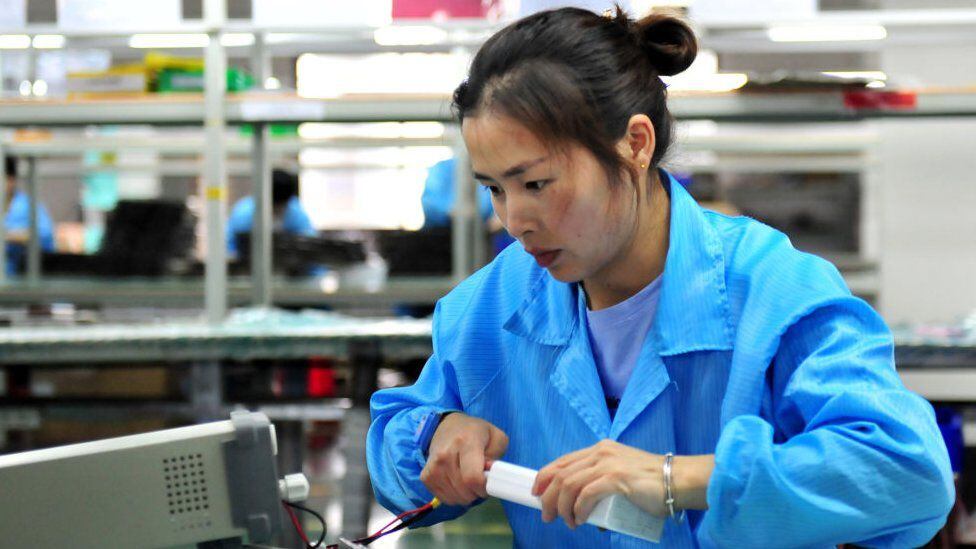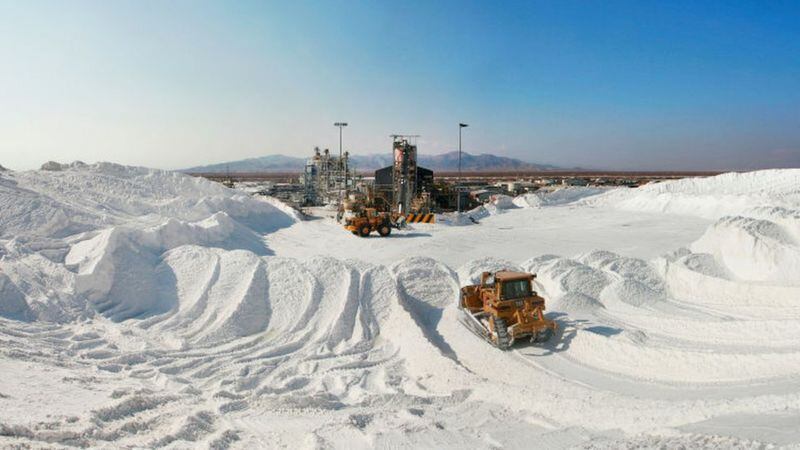More than half of lithium of the world is in Argentina, Bolivia and Chile, a triangle that has aroused the interest of governments and investors to enter these markets.
Countries like China and USA They do not want to miss the opportunity to have a key metal to manufacture the batteries used in electric cars, an expanding market to which more and more players are entering.
LOOK: Chile approves the 40-hour work week: how much work is done in the rest of Latin America and in the world?
“The main powers are fighting to get the minerals necessary for the energy transition and Latin America is a main battlefield,” Benjamin Gedan, director of the Wilson Center’s Latin America Program, told BBC Mundo.
“America was late to the party and Washington is clearly eager for China’s head start.”
Chinese companies have spent years looking for places to stock up on the so-called white gold in different parts of the world, especially in Latin America, where the world’s largest reserves of the metal are.
Bolivia leads the list with known reserves estimated at 21 million tons, followed by Argentina (19.3 million) and Chile (9.6 million), according to the US Geological Survey.
And Mexico, although it only has 1.7 million tons (ranking ninth on the list), has become a relevant player in North America, not only because of its geographical proximity to the United States and Canada, but also because it is becoming a production center for electric cars (especially after the recent announcement of giants that will set up factories on its territory, such as Tesla and BMW).
“Evil Activity”
General Laura Richardson, head of the US Southern Command, warned that China” continues to expand its influence Economic, Diplomatic, Technological, Informational, and Military in Latin America and the Caribbean,” during a presentation before the House Armed Services Committee in March.

“This region is full of resources and I am concerned about the malign activity of our adversaries taking advantage of that. It appears that they are investing when in fact they are extracting,” Richardson argued.
Regarding the “lithium triangle” in South America, made up of Argentina, Bolivia and Chile, he said that “China’s aggressiveness and its play on the ground with lithium, It’s very advanced and very aggressive.”.
What does China say?
Just as the United States and other countries are embarking on their plan to recover part of their energy independence, China has also been preparing for several years with an eye on the minerals most coveted by global trade, including lithium.

“China has a high degree of foreign dependence on some important mineral resources, and once the international situation changes, it will certainly affect economic security or even national security,” Natural Resources Minister Wang Guanghua said in early January. in an interview with the state news agency Xinhua.
The government has included 24 strategic minerals in its National Mineral Resources Plan published in 2016.
Among them are metals such as iron, copper, aluminum, gold, nickel, cobalt, lithium, and rare earths, in addition to traditional energy resources such as oil, natural gas, shale gas, and coal.
The plan notes that minerals are key to “safeguarding national economic security, national defense security and the development of strategic emerging industries”.
Explosive increase in Chinese investment
While Chinese companies are advancing in South America with gigantic mining investments, the triangle countries intend to take advantage of the technology and capital of Chinese companies with the aim of promoting local industrial development.
Only in the first three months of this yearChinese companies have closed ambitious agreements to invest in Bolivia, Argentina and Chile.

In Bolivia, Chinese firms CATL, BRUNP and CMOC have committed close to US$1 billion in lithium projects in the departments of Potosí and Oruro, according to the Atlantic Council think tank.
In Argentina, the Chery Automobile company will invest some US$400 million in the construction of a plant to manufacture electric vehicles, possibly in Rosario.
And in Chile, Tsingshan Holding Group, Ruipu Energy, Battero Tech, and FoxESS have committed to invest in a lithium industrial park in the city of Antofagasta, for an amount that is still unknown.
The business relationship between Argentina and China it has become increasingly close in lithium mining, with the announcement of at least nine investment projects in 2022 alone in the areas of Salta, Catamarca, and Jujuy.
Technological and geopolitical competition between the giants
According to the associate director of the Adrienne Arsht Latin America Center of the Atlantic Council think tank, Pepe Zhang, “The United States is actively seeking to strengthen its position in global supply chains of critical minerals and green technologies.”
In this context, “lithium is proving to be an increasingly critical area in the technological and geopolitical competition between the United States and China“, he tells BBC Mundo.
And China is going with its foot on the accelerator.

This year, Zhang estimates, is shaping up to be an important one for the Asian giant’s mineral investments in the region.
Projections indicate that the US$1.4 billion committed for this year would overcome the US$1.1 billion investment in 2021 and 2020.
“In January alone, we saw three Chinese companies commit to a US$1 billion investment in Bolivia,” says the researcher.
The “national security” factor
The White House has also explicitly made securing a mineral supply chain one of its priorities for strategic reasons.
“Critical minerals provide the building blocks for many modern technologies and are essential to our national security and economic prosperity,” the Joe Biden government said in a statement last year.

Minerals such as lithium, cobalt and rare earths, used in many products, ranging from computers to household appliances, and which are key inputs to produce technologies such as batteries and electric vehicles, wind turbines or solar panels.
As part of the world tries to advance in the transition towards less polluting energy, global demand for these critical minerals “will skyrocket between 400% and 600% over the next few decades,” the text says.
And, he adds, for minerals like lithium and graphite“demand will increase even more, up to 4,000%.”
“A tug of war between Washington and Beijing”
“China has an advantage because of Beijing’s willingness to invest in battery production in Latin America,” argues Gedan.

While “The United States is mainly focused on acquiring raw materials for US companies to build green technologies.”
Faced with this dilemma, it is likely that Latin American countries consider the Asian offer more attractive than the traditional model of exporting their commodities with very little added value.
“America is clearly eager to catch up”says the expert. “No wonder South America finds itself caught in a tug-of-war between Washington and Beijing.”
Source: Elcomercio
I am Jack Morton and I work in 24 News Recorder. I mostly cover world news and I have also authored 24 news recorder. I find this work highly interesting and it allows me to keep up with current events happening around the world.

:quality(75)/cloudfront-us-east-1.images.arcpublishing.com/elcomercio/UC4K7GZEABAFJIYDTVRWATDRT4.jpg)



:quality(75)/cloudfront-us-east-1.images.arcpublishing.com/elcomercio/FF3EOMIVBRCKHPFXY4BQFX3NFU.jpg)
:quality(75)/cloudfront-us-east-1.images.arcpublishing.com/elcomercio/I2D5E47DPBERHP7DQW5XIP2Y3E.jpg)
